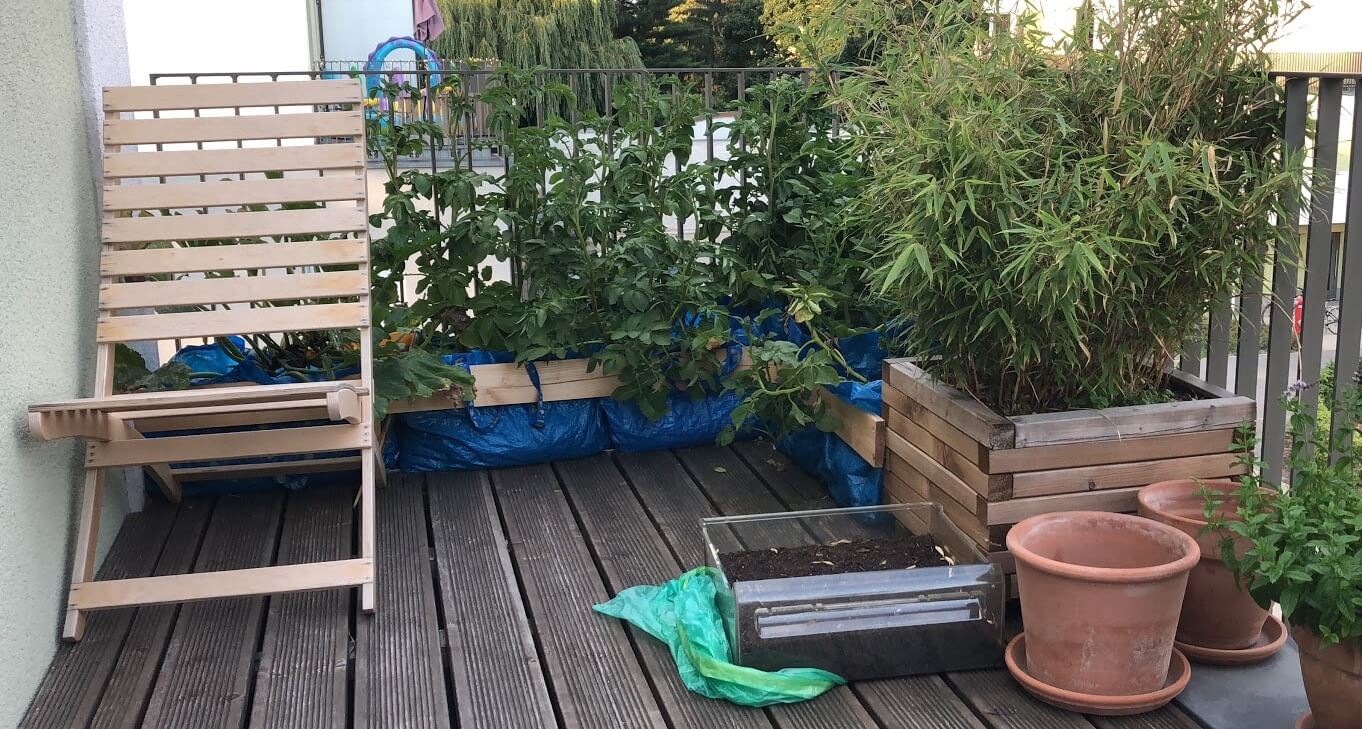How to get started with permaculture when all you have is a balcony

First of all, thank you for everyone reaching out to me after my last blog post. It sparked many good conversations about permaculture in general and what people want to see on Permapeople specifically. This post is based on feedback I got, where someone reached out and asked: “I am interested in permaculture but only have a balcony!”
The idea of Permapeople is to create a better way to get information about growing your own plants in a sustainableregenerative way. Many people are hesitant because they live in apartments and don’t have access to some growing space.
When I got into permaculture, the available and actionable information was scattered and hard to use. Specific urban growing instructions on balconies or windowsills were almost nonexistent.
This is why I think it is a great idea to write about how you can start with permaculture, even if you only have a balcony.
If you click here, you’ll find a list with the plants that are great to be grown in a container and are perfect for the urban permaculture gardener.
Permaculture is a design system with a few general principles, which you can use one a balcony too. I reinterpreted a few here and added some beginners’ tips. The goal is to get started, nothing more!
Observe, Design & Plan
Every good project starts with a plan. The very first thing you want to think about is why you actually want to grow stuff: Is it because you want some fresh herbs or maybe you want to watch bees and butterflies on nice and beautiful smelling flowers, or maybe you want to grow for medicinal uses. Ensure you have a rough goal in mind, which will help you decide when designing your balcony.
Observe your balcony and look for light conditions, wind, and other factors, which might be important: Some plants don’t mind wind but need full sun so you can put them in front. Some cannot bear wind but need a lot of warmth, maybe but them in the back next to a wall, which can save heat overnight. Check if you have a drain to collect water or any other way to collect it. Think about how you can do the work you have to, where to get water from, etc. Keep looking at your plants from day to day and try to understand: Do they need more water or less, more sun or less, or any other problems that may arise.
Keep Inputs Low
When you can start setting up your baclony, please don’t check at first online all the things you need to buy. Rather check your basement and storage if you have old plastic boxes or anything else you can use to grow plants in. Garden tools can be lend from friends, family, or neighbors for the first time. Soil, compost, and seeds can be obtained from them too. Promise them a share of the yield if everything works out. Lookout for perennialplants, for example Strawberries since you only need to plant them one time. Only buy if you really have to. Your own time and energy is another input most people forget, but you definitely want to keep it low. Only grow the plants you have the time to take care of and are resilient to a few days of neglect.
Chop, Drop & Only Add to the Top
When it comes to the actual task of growing, I think this is the most and simple thing you can do to maintain good soil for your plants: Continuously add a lot of organic matter to the top of your containers. Use your kitchen scraps, cut them small, and drop them directly on top of the soil. At the end of the season, chop away the old plants, cut them small, and drop them on top. Make sure to only cut away what is coming out of the soil and leave the soil undisturbed. Old roots in the soil are perfect organic matter when decomposing. Tomatoes love being grown in the compost of old tomatoes. Every organic matter you put on top of your containers will decompose by itself. There is no need to maintain a separate compost container.
Start Small
Another important thing is that you should start small not to get overwhelmed and drop everything before success. Even if you grow just a few plants initially, the amount of learning and reward will be huge. Go from there, learn from your experience, and extend your growing projects season by season. It is more important to get any yield than a huge amount of yield at the end of the season, so focus on that!
Diversify and Experiment
While starting small is important, don’t only grow one plant and get disappointed when it fails. There can be many reasons why the plant didn’t grow. Remember to observe frequently and reiterate on your design. Start with 2-3 plants you like to eat or look at and see how they go. If you want, you can also try to grow one plant and different varieties and locations on your balcony. Remember: Always keep experimenting and maximize the learning!
I hope this helps a few people getting started with permaculture, even if they just have minimal space to grow in. If you have any questions or suggestions that you want to see in this blog, please reach out to hello at permaculture dot org. I will read and answer every email. Also, make sure to join the newsletter below.
Happy growing 🌱✌️,
Ben